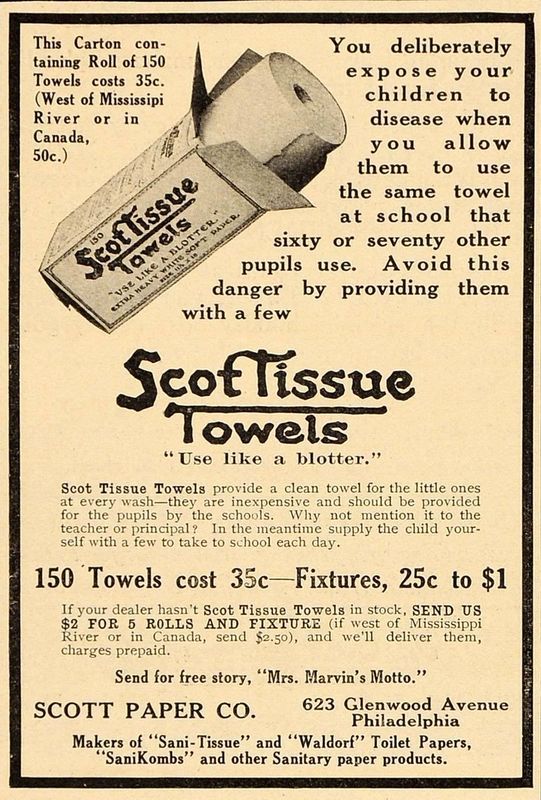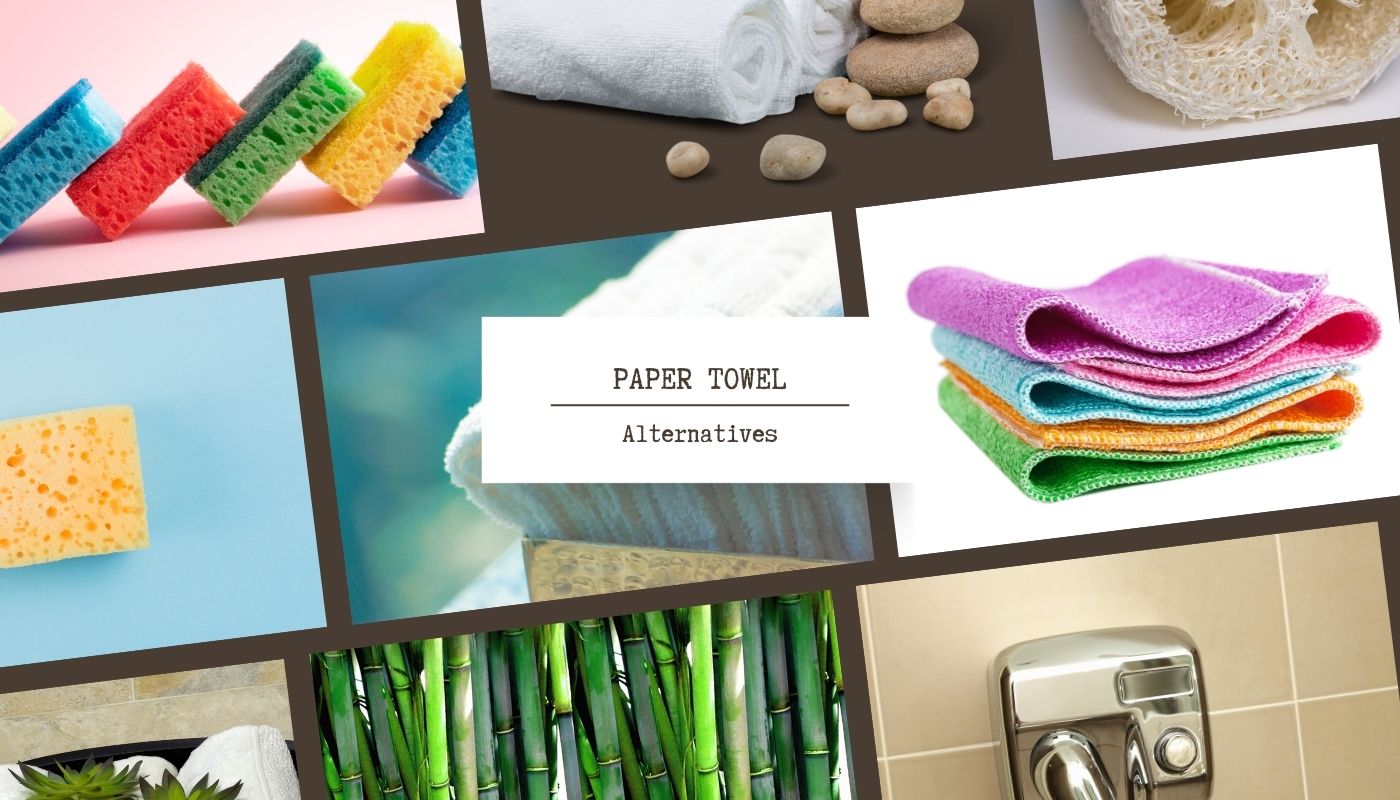The Hidden Cost of Paper Towels: Saving Trees and Habitats
Paper towels have become indispensable in our daily lives, offering convenience and disposability for cleaning and drying tasks. However, producing and consuming paper towels come with a considerable environmental cost, primarily due to the loss of trees and subsequent habitat destruction.1
In this article, we'll explore the historical use of paper towels, their prevalence in the United States, the environmental impact of their production, alternatives used in different countries, and tips for reducing paper towel usage.
Historical Use of Paper Towels

The paper towel was invented by Arthur Scott in 1907, resulting from a manufacturing mistake that produced thick, perforated rolls of paper.2 Scott capitalized on this error by marketing these rolls as disposable towels to prevent the spread of germs in public restrooms. Since then, paper towels have evolved and expanded in use, becoming a staple in homes and businesses worldwide for various cleaning and drying purposes.
Paper Towel Use in the United States
The United States leads the world in paper towel consumption, with Americans using an estimated 13 billion pounds of paper towels annually.3 This extensive use of paper towels can be attributed to the nation's emphasis on convenience, hygiene, and disposability. However, the consequences of such a high demand for paper towels include significant tree loss and habitat destruction.
Environmental Impact: Tree Loss and Habitat Destruction

The production of paper towels is highly resource-intensive, with approximately 110 million trees cut down each year to produce them.4 This massive deforestation results in habitat loss for countless species, reduced biodiversity, and increased carbon emissions, contributing to climate change.5
The Carbon Footprint of Paper Towels
Greenhouse Gas Emissions from Production and Transportation
The production and transportation of paper towels contribute to greenhouse gas emissions, further exacerbating climate change. The energy-intensive manufacturing process and the emissions from transporting paper towels to retailers and consumers add to their overall carbon footprint.
The Impact of Paper Towel Production on Water Resources
Water Consumption and Pollution in the Paper Industry
Paper towel production also consumes vast amounts of water and generates water pollution. The paper industry is one of the largest industrial consumers of water, and the chemicals used during production can contaminate water sources, posing risks to aquatic life and ecosystems.
The Economic Cost of Paper Towel Waste
The Financial Burden of Disposable Paper Products on Consumers and Businesses
The reliance on disposable paper products like paper towels places a financial burden on both consumers and businesses. As paper towel prices continue to rise, households and companies can save money by adopting reusable alternatives and reducing waste.
Alternatives to Paper Towels in Various Countries

Exploring and adopting alternative methods for cleaning and drying surfaces is essential to reduce tree loss and habitat destruction. Different countries have embraced various alternatives, some of which include:
-
Cloth towels: In many European countries, cloth towels are commonly used for cleaning and drying hands, reducing the need for disposable paper products.6
-
Sponges and rags: In some Asian countries, sponges and rags are preferred over paper towels for cleaning purposes, as they can be washed and reused, making them a more sustainable choice.7
-
Air dryers: Electric hand dryers are a popular alternative to paper towels in public restrooms in various countries. Although they do consume electricity, they eliminate the need for disposable paper products, reducing waste.8
-
Bamboo towels: Some countries are exploring using bamboo towels, which are made from a rapidly renewable resource. Bamboo can grow up to 20 times faster than trees, making it a more sustainable material for producing towels.9
Biodegradable and Compostable Paper Towel Alternatives
Environmentally Friendly Options for a Sustainable Future
For those who still prefer the convenience of disposable products, biodegradable and compostable paper towels offer a more environmentally friendly option. These paper towels break down more easily, reducing their impact on landfills and the environment.
Tips for Reducing Paper Towel Use at Home and Work
Simple Steps to Minimize Waste and Save Resources
Here are some practical tips for reducing paper towel usage at home and work:
- Use cloth towels and napkins instead of paper towels for drying hands and cleaning up spills.
- Keep a set of reusable cleaning cloths or sponges for various household tasks.
- Cut paper towel rolls in half to make them last longer and encourage more mindful usage.
- Opt for air drying or using electric hand dryers in public restrooms when available.
- Educate and encourage family members and coworkers to reduce paper towel usage and adopt sustainable alternatives.
Conclusion
The production and consumption of paper towels contribute significantly to tree loss, habitat destruction, and various environmental concerns. By understanding the historical context of paper towels, exploring alternative methods used in various countries, and implementing tips for reducing paper towel usage, we can make more informed decisions about our consumption habits and work towards a more sustainable future. Encouraging the adoption of reusable and eco-friendly alternatives can help reduce our reliance on paper towels and protect our planet's precious resources. Reducing paper towel consumption is an environmentally responsible choice and a vital step towards preserving the Earth's biodiversity and mitigating climate change.
References
- Chua, A. (2018). Zero Waste in Singapore: A practical guide for reducing disposables. Eco-Business.
- Environmental Protection Agency (EPA). (2021). Advancing Sustainable Materials Management: 2018 and 2019 Tables and Figures. Retrieved from https://www.epa.gov/sites/default/files/2021-11/documents/2018_2019_tables_and_figures_dec_2021_fnl_508.pdf
- Euromonitor International. (2017). Tissue and Hygiene in the US. Retrieved from https://www.euromonitor.com/tissue-and-hygiene-in-the-us/report
- Fahy, J. (2009). The Story of Scott Paper Towels. Philadelphia Inquirer. Retrieved from https://www.inquirer.com/philly/business/20090329_The_story_of_Scott_paper_towels.html
- Huang, C., Chen, Y., & Stack, M. M. (2018). Paper towels vs. electric hand dryers: A critical review of the literature. Journal of Building Engineering, 19, 46-53.
- Moore, J. (2019). The Future of Paper: How Innovative, Sustainable Alternatives to Wood Pulp Are Changing the Industry. Retrieved from https://www.greenbiz.com/article/future-paper-how-innovative-sustainable-alternatives-wood-pulp-are-changing-industry
- World Wildlife Fund (n.d.). Deforestation and Forest Degradation. Retrieved from https://www.worldwildlife.org/threats/deforestation-and-forest-degradation
- Zero Waste Europe. (2020). 5 Zero Waste Alternatives to Paper Towels. Retrieved from https://zerowasteeurope.eu/2020/06/5-zero-waste-alternatives-to-paper-towels/
- Statista. (2021). Per capita consumption of tissue and hygiene paper in the United States from 2015 to 2025 (in kilograms). Retrieved from https://www.statista.com/statistics/1244276/tissue-and-hygiene-paper-per-capita-consumption-united-states/
You must be logged in to this post! Please sign in:




